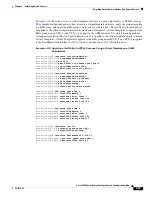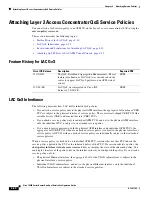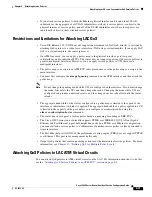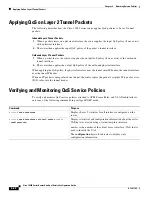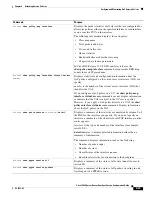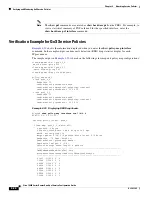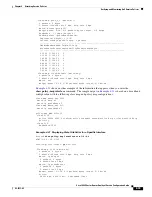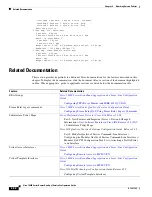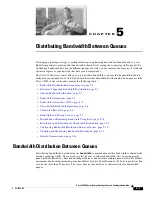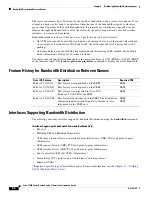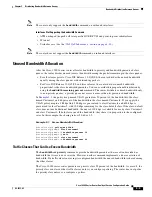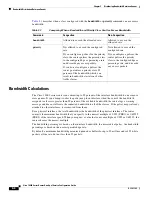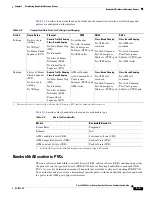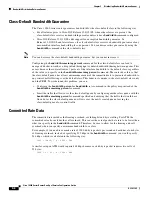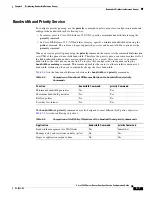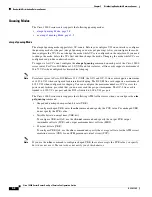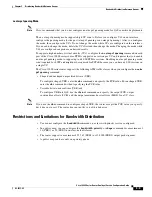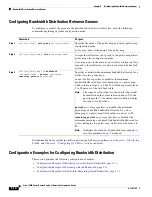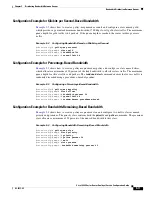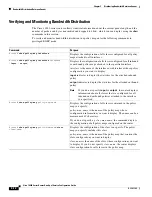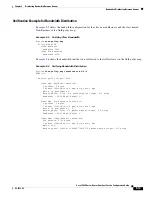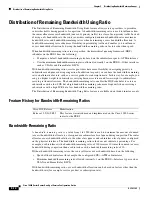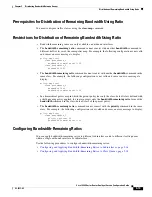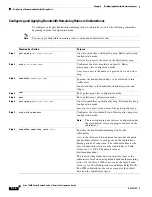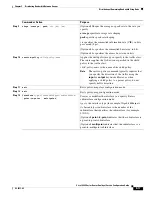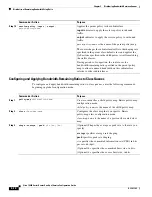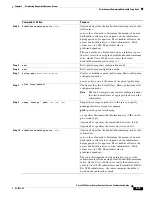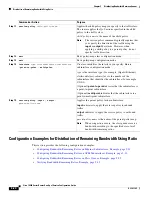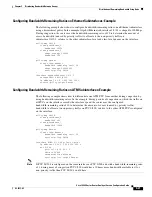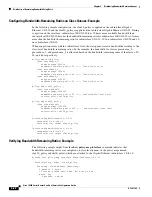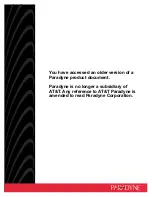
5-7
Cisco 10000 Series Router Quality of Service Configuration Guide
OL-7433-09
Chapter 5 Distributing Bandwidth Between Queues
Bandwidth Distribution Between Queues
Bandwidth and Priority Service
To configure priority queuing, use the
priority
command in policy-map class configuration mode and
configure the bandwidth in the following way:
•
In releases prior to Cisco IOS Release 12.3(7)XI, specify a minimum bandwidth rate using the
priority
command.
•
In Cisco IOS Release 12.3(7)XI and later releases, specify a minimum bandwidth rate using the
police
command. The router no longer supports the
percent
and
bandwidth-kbps
options for the
priority
command.
When you create a priority queue using the
priority
command, the router sets the committed information
rate (CIR) of the queue to near link bandwidth. Therefore, the priority queue can consume almost all of
the link bandwidth when packets are transmitted from it. As a result, there is no way to guarantee
bandwidth to the other queues on the link. To resolve this, configure the other queues using the
bandwidth remaining
command. This command enables the router to allocate relative amounts of
bandwidth, eliminating the need to constantly change the class bandwidth.
Table 5-4
lists the functional differences between the
bandwidth
and
priority
commands:
The
bandwidth
and
priority
commands are also designed to meet different QoS policy objectives.
Table 5-5
lists those differing objectives:
Table 5-4
Comparison of Functional Differences Between the bandwidth and priority
Commands
Function
bandwidth Command
priority Command
Minimum bandwidth guarantee
Yes
Yes
Maximum bandwidth guarantee
No
Yes
Built-in policer
No
No
Provides low-latency
No
Yes
Table 5-5
Comparison of QoS Policy Objectives of the bandwidth and priority Commands
Application
bandwidth Command
priority Command
Bandwidth management for WAN links
Yes
Somewhat
Manage delay and variations in delay (jitter)
No
Yes
Improve application response time
No
Yes

